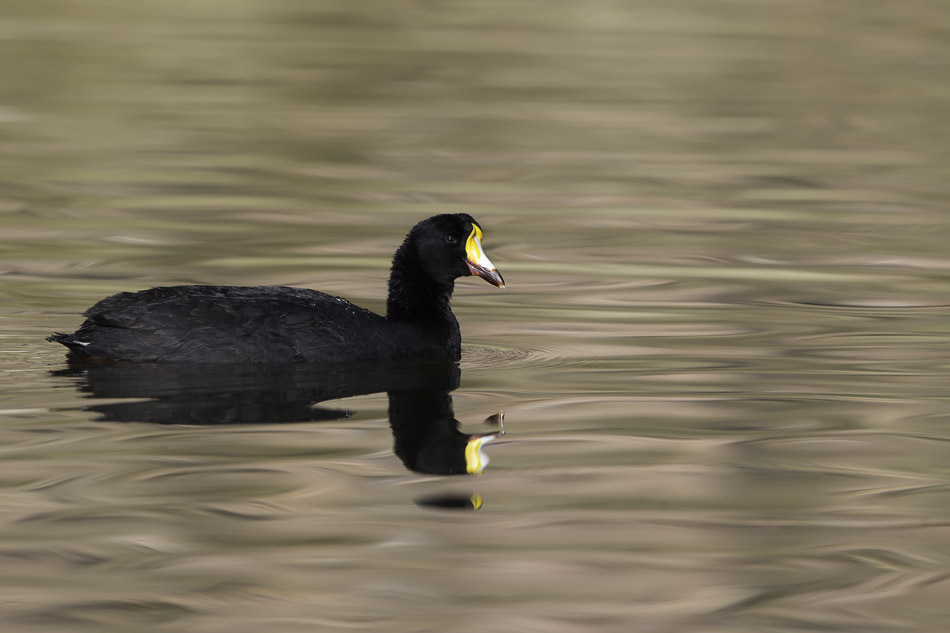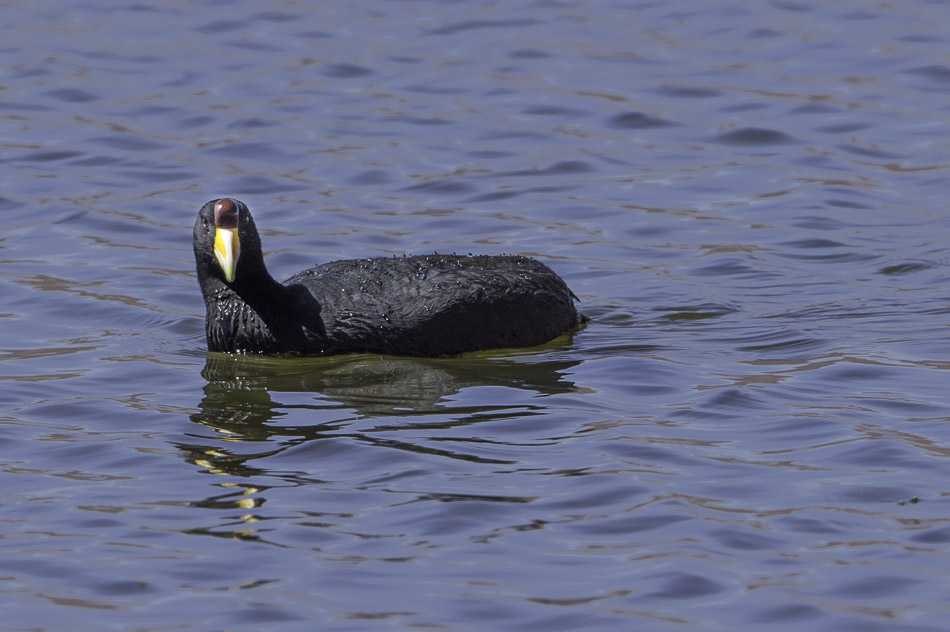It was a crazy trip, going up to nearly 4600m high and we weren’t sure which of us was the dafter, us for being there or the Coots that lived there.
Paula and I took a ‘Living Wild in South America’ expedition to Laguna Blanca and the surrounding altiplano, situated in the high Andes of Catamarca, Argentina.
We were searching for three species of Coots, the Giant Coot, the Andean Coot and the Horned Coot.
Many birdwatching groups visit Argentina, only a few manage to get to the Altiplano, but the wildlife on these dizzyingly high plains is quite special.
The image below is of a Giant Coot.

All three of these birds look very similar at a distance, however a closer view of their heads show quite different frontal shields. The frontal shield consists of a hard or fleshy plate of specialised skin extending from the base of the upper bill and over the forehead. Each species has its shield coloured and shaped differently. The function of the shield is closely tied to sexual attraction, display and territoriality. As with so many bird families in the Andes,these three species occur at different altitudes, though there is some overlap in distribution. All together the South American genus of Coots demonstrates beautifully the concept of allopatric speciation.

This Andean Coot has a large bulbous red knob on its forehead.
On we travelled through the Puna, Cardon Cactus either side of us, Andean Swifts scything across the sky as we drove up and up.

Eventually at Laguna Blanca we found the largest of the coot family the Giant Coot, together with James’s or Puna Flamingo.
The Giant coot weighs over 2 kilos and is considered flightless. Not surprising it builds an even bigger nest made up of stack upon stack of aquatic weed.
We had to travel quite a bit further on before we discovered the other Coot we were searching for, the much rarer Horned Coot.
Eventually we found ourselves in a barren, stark, toffee and turquoise coloured landscape, where the air was so thin I had to take Oxygen.
The Horned Coot is only found at a altitude in excess of 4500m and we had discovered several birds on a diamond shaped lake.
Horned Coots are rare and it was not so long ago that they were hunted for food.
Light headedness is a sign of oxygen depletion but it could have been excitement in watching this rare coot.
We would have been as daft as a coot to stay any longer so reluctantly returned to a lower altitude and a cup of warming soup in a small hostal.





